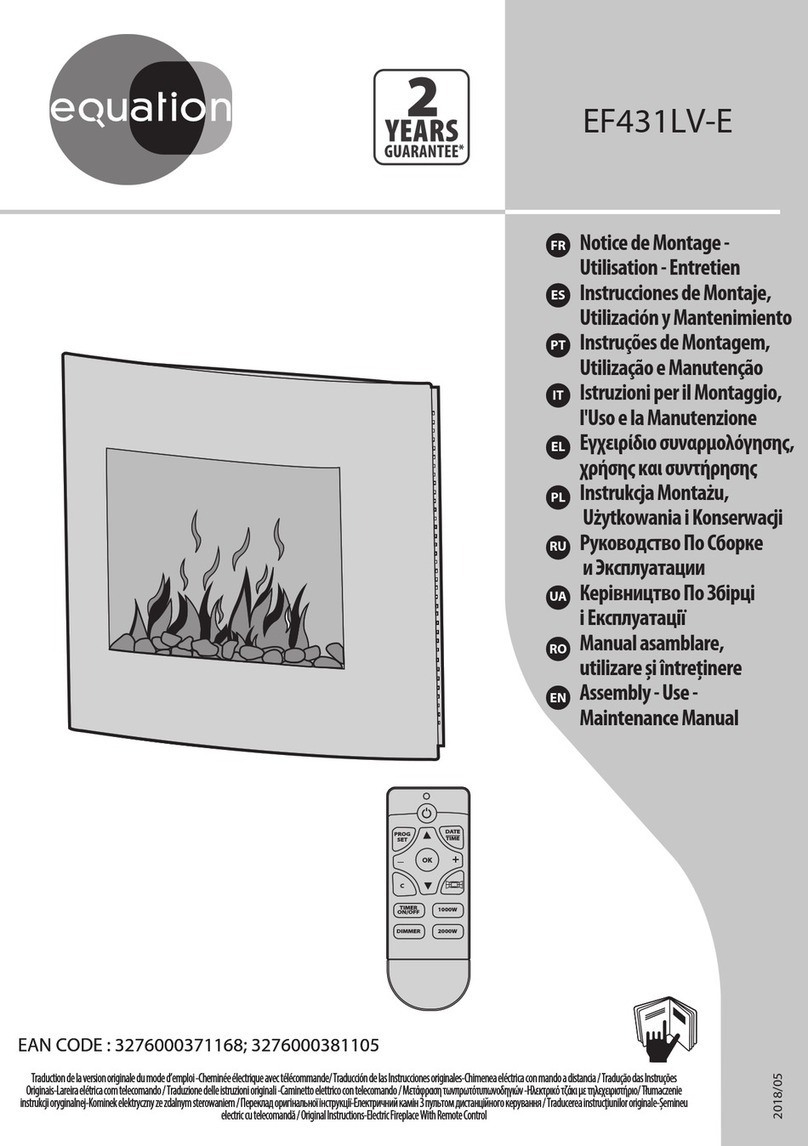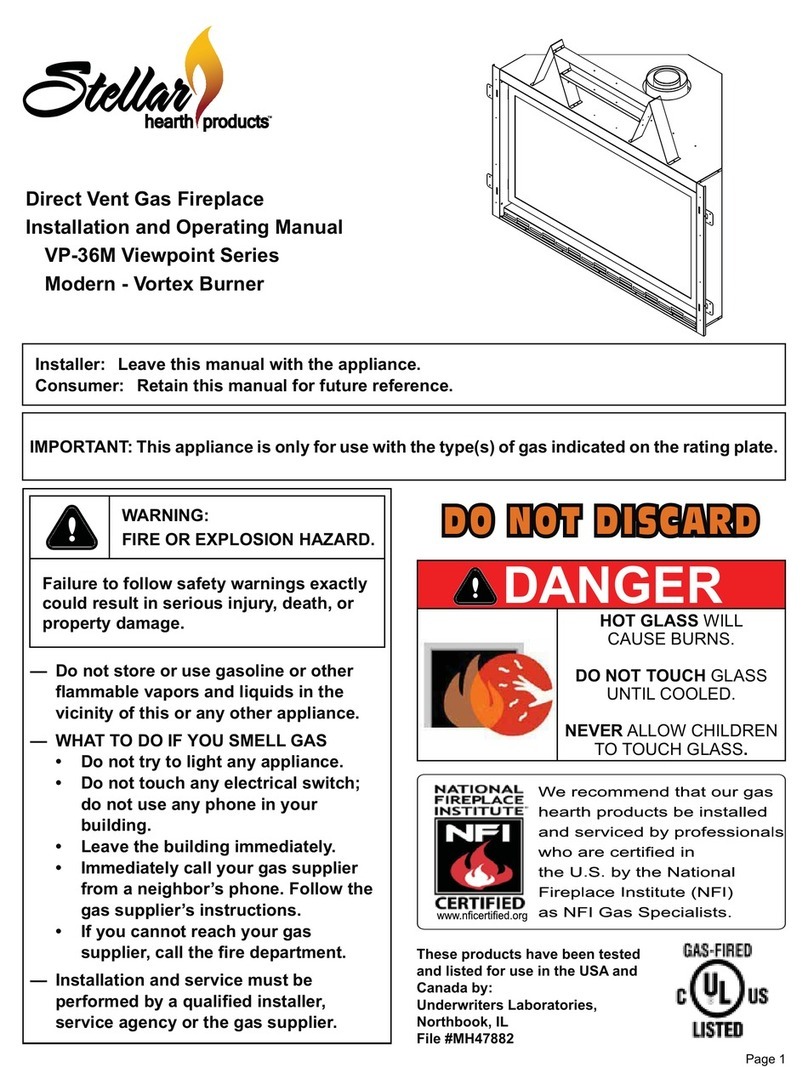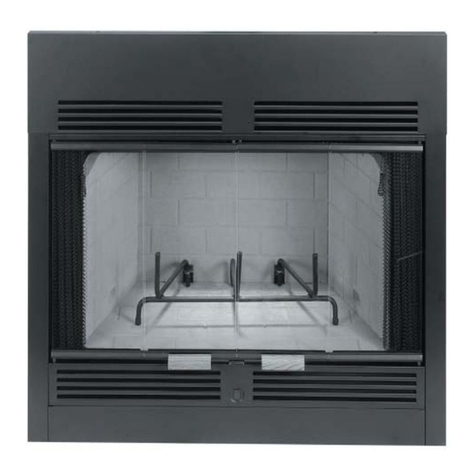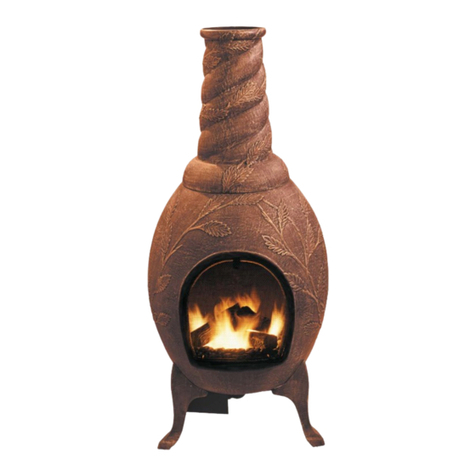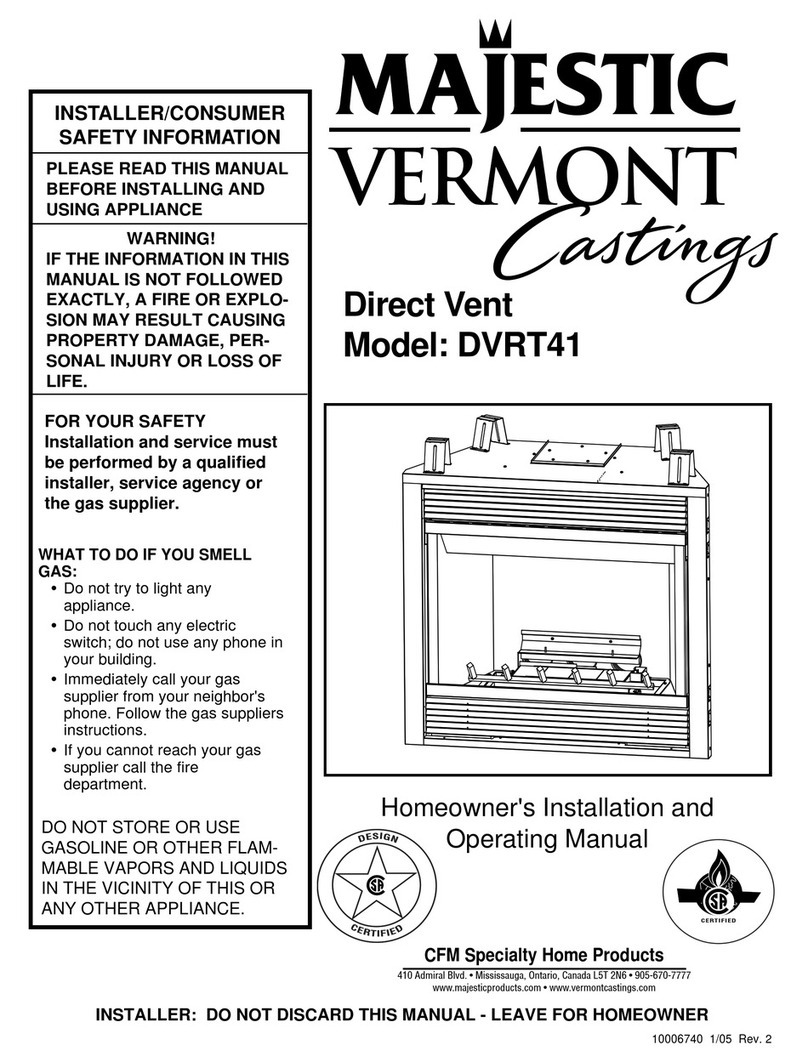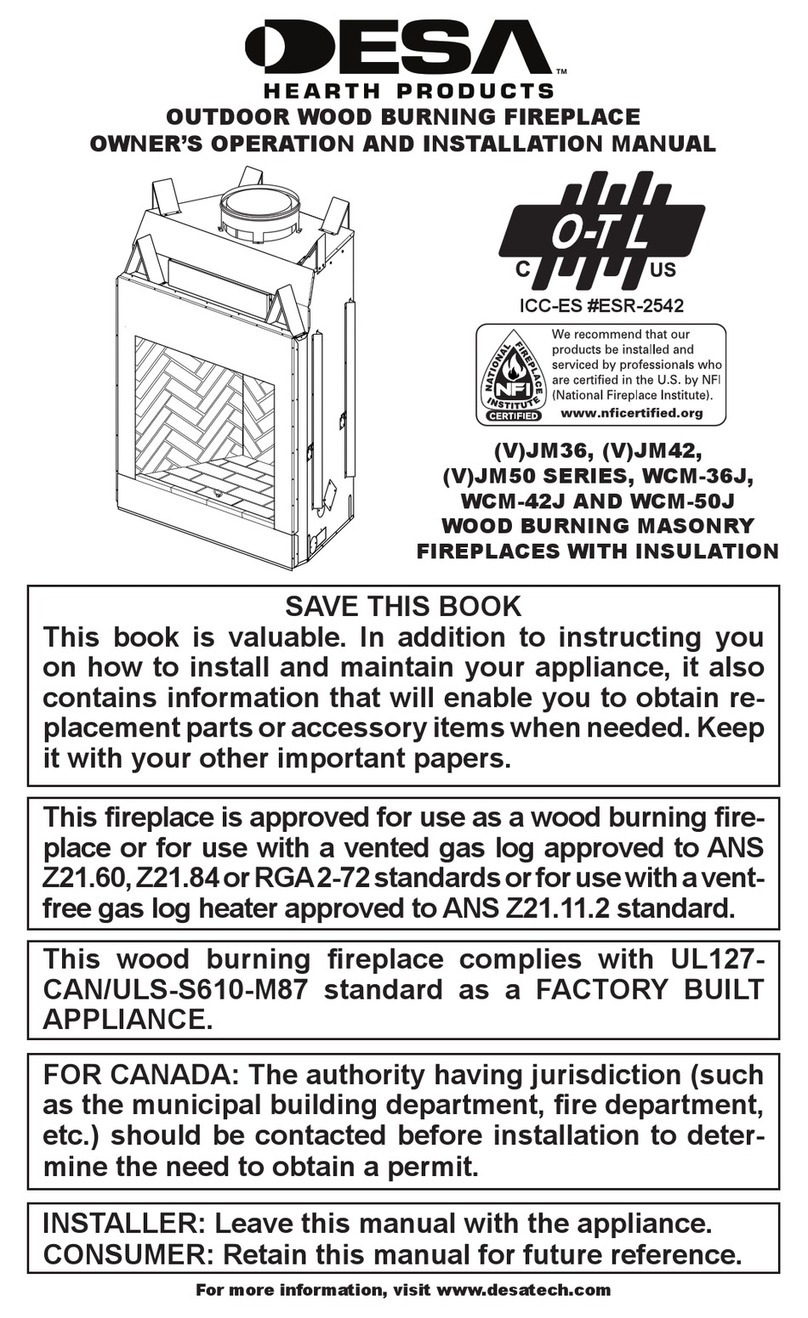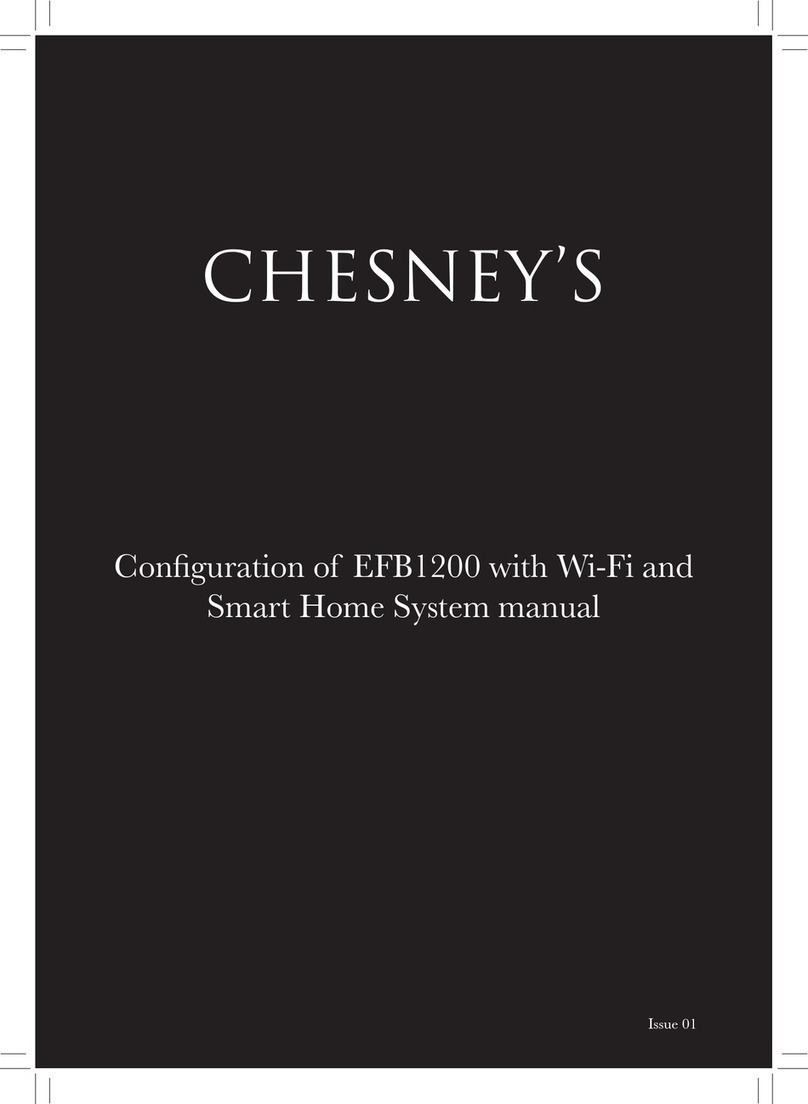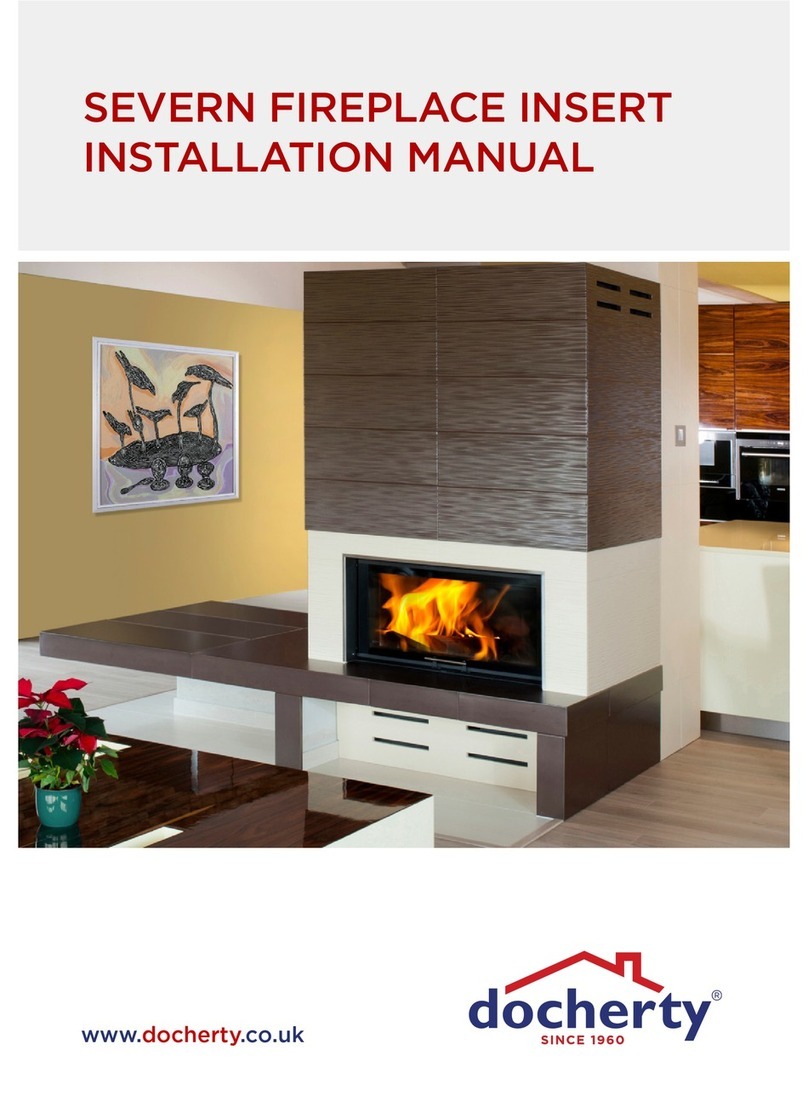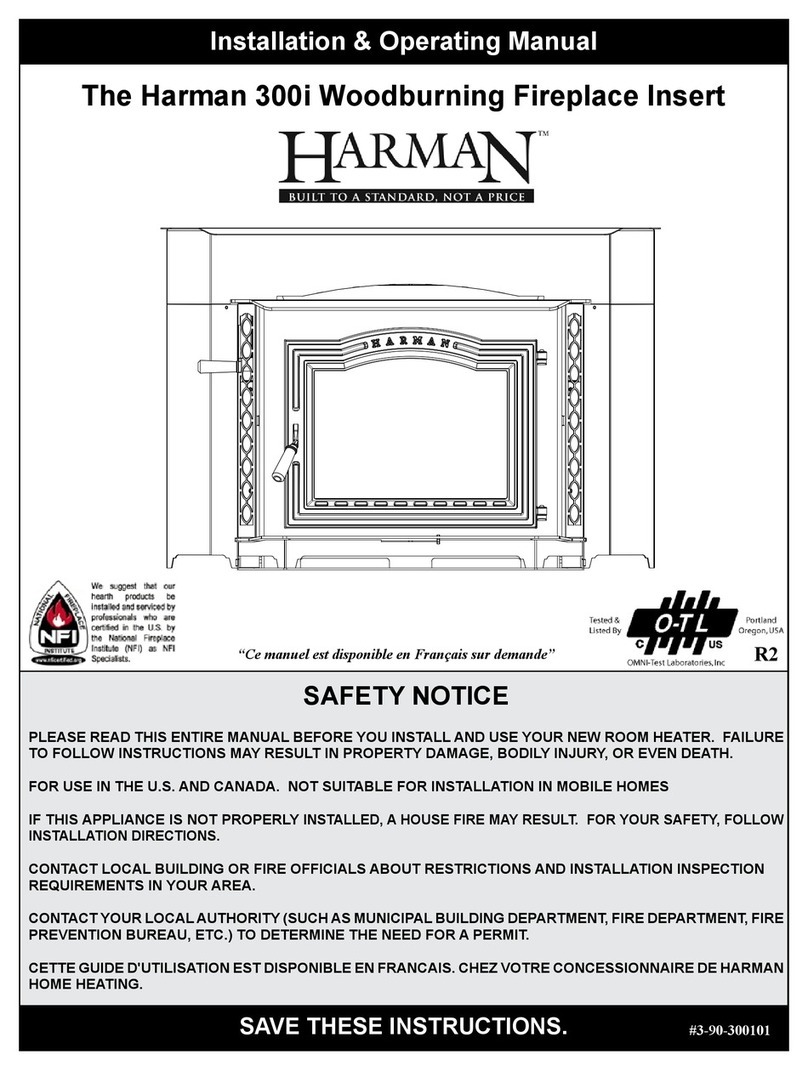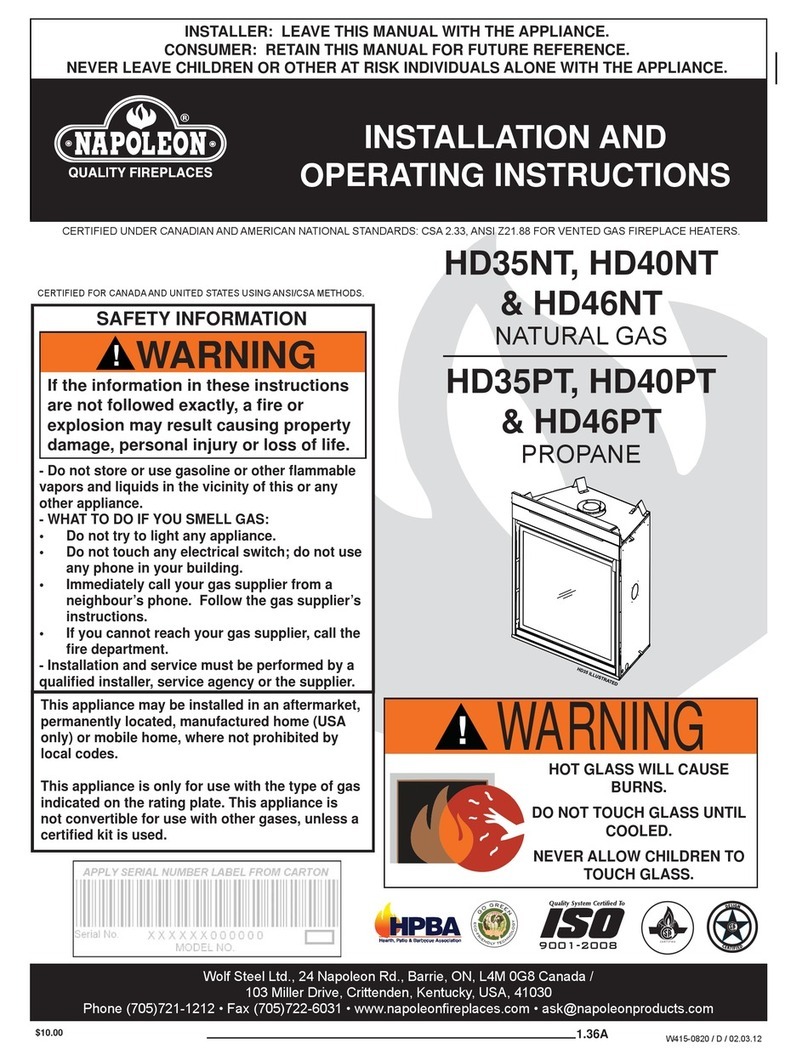5
No purpose made venlaon is normally required for this appliance when installed in G.B. If the appliance is
being installed in I.E then refer to I.S 813:1996 (Domesc Gas Installaon—Naonal Standards Authority of
Ireland). Venlaon areas (if applicable) should be checked periodically to ensure there is no obstrucon,
even though none is normally required for this appliance.
When installing into convenonal chimneys or 7” (175mm) flues it may be necessary to leave the restrictor
baffle supplied to increase the efficiency of the fireplace. It is mandatory that the safe clearance of products
be checked by performing a smoke match test as described on the product data label.
IMPORTANT NOTE: This product is supplied as standard with a restrictor fied to the flue outlet. This
restrictor MUST be removed if the product is being installed into a 5” (125mm dia.) flue. The flue restrictor is
fied from the INSIDE of the appliance with two securing screws. This restrictor should be le in place if the
appliance is being installed into a 7” (175mm dia.) or 9” brick chimney (class 1 flue).
In addion the fing kit will also include an addional flue restrictor which can also be fied (again from the
inside of the appliance) if the flue height is in excess of 5metres to provide a higher efficiency.
SPILLAGE TEST: To check for sasfactory clearance of products of combuson, close all doors and windows
and leave the appliance burning on HIGH for five minutes. Insert a lit smoke match just into the top of the
fire opening and move it le and right, all the smoke must be drawn into the flue. If spillage occurs allow a
further 5 minutes and repeat the test. If spillage sll occurs turn off the appliance and seek expert advise . If
an extractor fan is situated in the room the spillage test should be repeated with the fan running. If there is a
connecng room with an extractor fan the test should be repeated with all the doors to that room open and
the extractor fan running. If the appliance spills with the restrictor fied then the restrictor should be
removed and the spillage test repeated. If the spillage test connues to fail expert advise should be sought
and addional venlaon may have to be provided.
This appliance must only be installed on to a suitable hearth with a minimum thickness of 12mm. The
appliance must not be installed directly onto carpet of other combusble floor materials. The fireplace
surround (back-panel) must have a temperature rang of at least 150oC.
Do not place so wall coverings (i.e. embossed papers etc,) furniture or other combusble items too close to
the fires as they may discolour or scorch.
Do not place or throw rubbish or otherwise on the fuel-bed.
Do not place any combusble materials or flooring (i.e. carpets etc,) on any part of the hearth.
WARNING: This appliance has a naked flame and as with all heang appliances a fireguard should be used
for the protecon of children, the elderly and infirm. The fireguard should conform to BS8423 : 2002
(Fireguards or use with Gas Heang Appliances).
Important Note: It is quite normal for a flame effect gas appliance to experience a small amount of soot or
staining to some parts of the fuel effect components. If this becomes excessive it may because the fuel bed
is not fied correctly—this should be checked according to these installaon instrucons prior to
contacng a service engineer.
It is very important that you arrange for a GAS SAFE registered engineer to service your appliance every year
– during this service the engineer will remove the appliance and check for debris, check the operaon of the
flue and check the operaon of the appliance. This is important for you and your families safety.
NEVER place any rubbish or otherwise onto the fire—this will affect the way the product operates and may
affect the warranty of the product.
NEVER place more ceramic components onto the fuel bed than specified in the instrucons.
NEVER touch the ceramics when the appliance has recently been switched off—these components retain
heat and may cause burns. Leave the appliance to sufficiently cool prior to any contact of the ceramics.




















